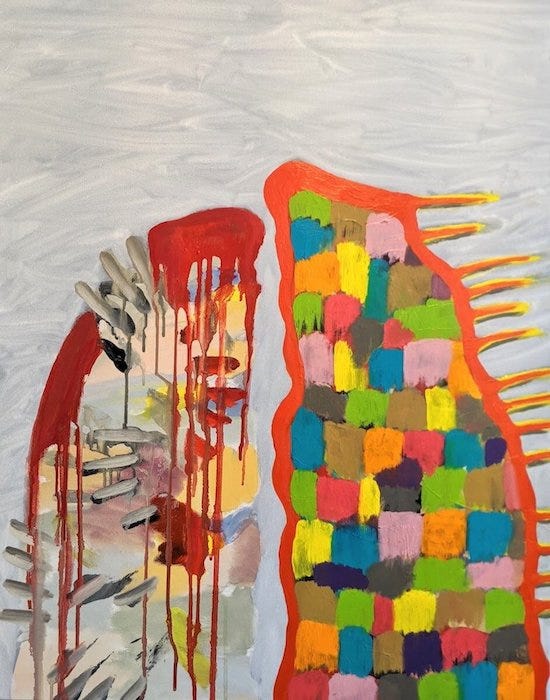The Meaning of Meaning
What is meaning in art, and who creates it?

One of the things I have thought about a great deal over the years as an artist is the nature and substance of meaning. It was important to me because if I was going to devote my life to something, I wanted to figure — to the degree I could — what worth it brings to the world and how I could know that. That isn’t easy with a chameleon like art, where there is so much subjectivity involved, and where the dynamic between creation, reception, and interpretation is so complex.
A while back, I began thinking about meaning as a kind of joint effort between artist and viewer, rather than any sort of one-way transmission. Marcel Duchamp once said that it is the audience that completes the artwork. He may have been serious, or perhaps he was being provocative in the moment, or maybe both, but I believe that to be literally true. I believe that the meaning and substance of an artwork only blossoms when it hits the eyes, body, thoughts, histories, and emotions of a viewer. The viewer unleashes what is, until the artwork is experienced, unrealized potential. The artwork is carried, considered, absorbed, and changed within the viewer in a unique way, and through the viewer an essence of the artwork goes back out into the world transformed.
If meaning in art is in fact created through a shared act of artist and viewer, what might that mean in practical terms, and how it would play out? Could we look at an example that might shed light on the process?

Lately, I’ve been reading some poems from Adam Zagajewski’s latest volume, Asymmetry. (It’s fantastic.) One poem, “Rachmaninoff,” is about hearing the composer’s Third Concerto as a young man. This is the second stanza:
I heard the promise of things to come,
omens of complex happiness, love, sketches
of landscapes I would later recognize,
a glimpse of purgatory, heaven, wanderings, and finally
maybe even something like forgiveness.
It is youthfully fertile, and it also struck me as a sharp rendition of the kind of associative frenzy that can happen as we perceive a really compelling artwork, and the way the streams of meaning and feeling branch off, in some instances more quickly than the mind can process them.
Can you call this experience — the internal ferment of our interaction with a painting, poem, film or dance — the stuff of meaning? I think you can, or at least an initial state of meaning. To do so asks that we think of meaning as a living process that takes place over time, rather than a static or constant entity. Later, as the temperature cools, some of our impressions and thoughts may set into more stable (but less nuanced) forms that we can ponder and share more easily. Others may remain suspended, enigmatic, suggestive, inscrutable, beautiful.
